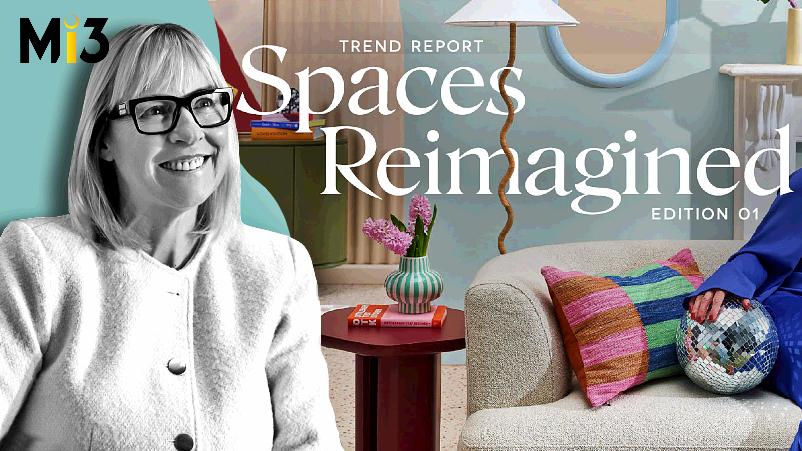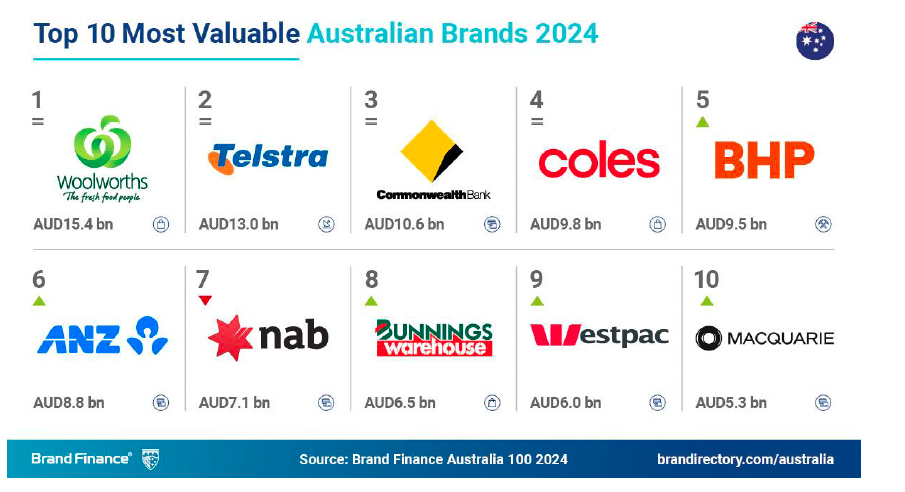Ecom pureplay Temple & Webster flips performance script as acquisition costs soar, piles $22m into brand, profit rockets – now aims to become consumer trends authority

The global health and wellness phenomenon isn’t just focused on food, supplements, holidays or the outdoors. Nor is the uncertain political, social and economic maelstrom consumers are experiencing globally right now limited to voting behaviours, social commentary or protests. It turns out both are also having a strong impact on the way people style their homes and purchase furniture.
Both broader consumer trends have materialised in the first-ever furniture Trends Report produced by Temple & Webster. The report taps into the pure-play retailer’s own vast data pool of millions of customer interactions, behavioural and purchase insights, product reviews, social and search in a new, strategic content marketing play that adds another string to its brand building bow.
Formerly a performance purist, the retailer has flipped the script amid ongoing customer acquisition cost inflation and declining ROI – ploughing $22m into brand across FY24 and FY25 in a bid to refill the funnel and broaden growth horizons. It’s still a relatively small proportion of the firm’s circa $176m marketing spend over those two years – but brand is now “business as usual” per the firm’s latest financials.
Now Temple & Webster aims to become a consumer trends authority by tapping the massive customer data trove at its disposal, while marrying search signals to product curation to close the loop on brand and demand.
Three big trends
The Temple & Webster Trend Report has landed on three major trends gathering momentum in furniture and the broader home decoration space: ‘Mix & Max’, reflecting a more bold, vibrant collision of colour and pattern such as checkerboards with florals and wavy mirrors; ‘Past forward’, or a return to the retro looks of the 1970s such as walnut coffee tables and merlot velvet couches; and ‘sumptuous sanctuaries’, or more luxurious, restorative space decorating through natural materials and calmer shapes.
Temple & Webster’s search data backing this up includes a 95 per cent increase in walnut searches (+115 per cent specifically looking for walnut coffee tables), a 32 per cent lift in searches for merlot-coloured furniture, a 286 per cent increase in boucle bed searches, and a 26 per cent increase in wavy furniture searches. The retailer is also drawing on regular externally commissioned research studies, product reviews and social insights to inform the Trends report.
“Digging into the macro-economic psyche and conditions has been really, really interesting because broader movements like the wellness movement, which is everywhere, are coming into furniture,” says Temple & Webster director of insights and trends, Lucy Sutherland. “There’s real focus on health and wellbeing. If you take something like that, then look at it and understand how that works in a consumer’s home, there’s a really interesting pattern with shapes, finishes, colours, layouts and things like that.
“One of our trends was ‘sumptuous sanctuaries’, which is all about making your home a retreat and somewhere that is soothing and cocooning – all of those things we need right now. Because the political environment feels unsteady, the economic environment is a bit scary, and our homes become more important to us.”
According to Sutherland, the conceptual idea of ‘past forward’ also has its roots in the wave of what many have called the ‘polycrisis’ confronting us all as disruptive social, technological, economic, environmental and political force converge into a multi-faceted crisis. That’s at least how Kantar is putting it: Speaking to Mi3 last month, Kantar’s local managing partner, Mark Kennedy, pointed out 87 per cent of consumers in 2025 feel the world is becoming more hostile, risky and out of control as a result of these “unstoppable shifts in the ocean they can’t do anything about”.
“We do see product directions that sometimes surprise us – the whole ‘past forward’ has been an interesting one, because it really taps into the psyche of the moment, or current sentiment that times are stressful, they’re unsettled and during times like that, we often look back to happier times,” Sutherland continues. “We came across a term, ‘animalia’, which is a word in the Dictionary of Obscure Sorrows [a dictionary published in 2021 full of made-up words to describe deep emotions] describing a nostalgia for a time never known, which just resonated so well here.
“Think about to the 1960s and 1970s: We think it was a carefree time from what we’ve heard. We’re embracing the fashion of those times, and we’re seeing it come through into the home through the use of lots of velvet, the reintroduction of walnut as a key colour, and colours such as merlot, mustards and browns coming back – and things like fringing on chairs, bar carts and the whole martini movement.”
Insight feeds product feeds marketing
Meanwhile, in a sign of the economy has taken a bite into purchasing patterns, Sutherland also points to a trend towards buying multi-functional pieces of furniture, such as an ottoman that’s also a storage piece, or a stone coffee table that works indoor and outdoor.
Take such sentiment, and overlay it with what customers are searching for on the website, and Temple & Webster could see just how much of a movement there is back to these types of finishes, colours and looks, Sutherland says.
The push behind the report is further embedding Temple & Temple “at the forefront of consumer trends and producing products and product ranges, insights, through to blog posts that resonate with what is happening in the consumer psyche”. But such insights have been regularly feeding into the retailer’s internal industrial design team so they’re making products informed by the latest consumer insights and shopping behaviours. Sutherland’s team’s work is also being used an information tool for merchandisers to source suitable products globally. It’s not just big-ticket items either – there are plenty of vases, cushions, lamps and other smaller products in the mix.
Nevertheless, pairing all this insight with high-level photography in a next-gen catalogue complete with product recommendations, surfaced data points and stylised product showcases, then supporting this with curated, ‘shoppable rooms’ on its website, is a new kind of brand play by Temple & Webster. Its consumer buying behaviour validates trends which in turn validates product development, which in turn feeds marketing and sales – a continuous loop. The data and storytelling aren’t just dumped into an interactive report – but pushed across EDMs, socials and onsite as a way of providing more resolved rooms and styling ideas. And then the data that comes back feeds the loop.
“We really want to position ourselves as a trend authority, because we have access to all this data and insight. We’re wanting to bring to light trends that are really shifting, how Australians style up their homes and what’s working with them,” says Sutherland.
One of our trends was ‘sumptuous sanctuaries’, which is all about making your home a retreat and somewhere that is soothing and cocooning – all of those things we need right now. Because the political environment feels unsteady, the economic environment is a bit scary, and our homes become more important to us.
Temple & Webster’s top-of-mind brand goal
Becoming the top-of-mind brand in the category is Temple & Webster’s top mid-term strategic goal, as reiterated in its latest full-year FY25 report – it’s spent $22 million on brand marketing in the last year to achieve it. An emphasis on growing brand awareness is the key metric here, and the retailer cited 9 per cent unprompted brand awareness compared to the unspecified market leader at 39 per cent, placing it 6th overall in the league table, one place up year-on-year. It’s also seen share of branded searches increase from 4.3 per cent to 4.9 per cent over the last 12 months, according to the June 2025 Google Brand Dashboard.
To further the brand job, the retailer has switched to a more dominant screens-based strategy, now advertising on free to air TV, as well as BVOD, online video and social.
“We have transitioned from short, experimental bursts of brand marketing to an always-on approach following detailed MMM analysis,” the company stated, adding brand building activity “will be a core part of our total marketing spend”.
In the meantime, customer acquisition costs continued to climb year-on-year to $101 in FY25, a 1.4x ROI compared to 1.7x and $88 in FY24 and 2x and $72 in FY23. Average spend across customers also dipped $6 to $456 in FY25 despite a record 1.274m active customers and continued growth for new and repeat customers. But against a background of squeezed consumer finances, a decent result. The retailer also cited record NPS of 63 per cent.
“FY24 and FY25 represented periods of investment for the business, with elevated marketing spend to drive growth and increase brand awareness,” it stated in the financial report. “We will continue to invest in brand marketing, however this will become a recurring marketing channel going forward, and is now captured within our business-as-usual marketing costs line.”
The retailer reported another record revenue result this past year, up 21 per cent on FY24 to $601 million. Even with additional costs to build share of wallet and market presence, EBITDA was also up 43 per cent to $18.8m, off the back of record share in the furniture and homewares market of 2.7 per cent, according to ABS Australian retail data. Post-tax profit climbed sixfold, as did earnings per share.
While neither Sutherland or Temple & Webster CMO, Joana Barros, would be drawn on how exactly success is being measured or early signals around the Trend Report’s reception, Temple & Webster will be looking at how many products curated in the report are sold, watching behaviours, plus engagement with both the report and curated selections.
“The Trend Report is not a one-off – always when you do something for the first time, you need to learn,” Sutherland concludes. “We will have a benchmark to measure against for the next one and consecutive ones after that. So it’s definitely something we want to continue with and we’ve got on the site. We’re in such a good position to utilise data and produce collateral that really helps people put things together in their homes, rather than just listing 200,000+ products on the website.”





